
In this January 27, 2015 photo, an iceberg floats in the Bahia Almirantazgo near Livingston Island, part of the South Shetland Island archipelago in Antarctica. Antarctica conjures up images of quiet mountains and white plateaus, but the coldest, driest and remotest continent is far from dormant. The majority of it is covered by ice, and that ice is constantly moving. (Photo by Natacha Pisarenko/AP Photo)
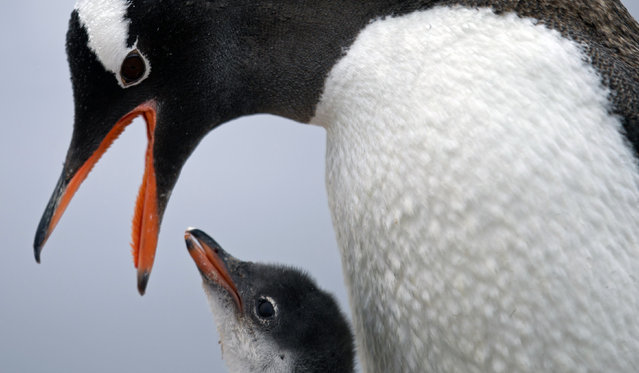
In this January 22, 2015 photo, a Gentoo penguin feeds its baby at Station Bernardo O'Higgins in Antarctica. “To understand many aspects in the diversity of animals and plants it's important to understand when continents disassembled”, said Richard Spikings, a research geologist at the University of Geneva. “So we're also learning about the real antiquity of the Earth and how (continents) were configured together a billion years ago, half a billion years ago, 300 million years ago”, he said, adding that the insights will help him understand Antarctica's key role in the jigsaw of ancient super continents. (Photo by Natacha Pisarenko/AP Photo)
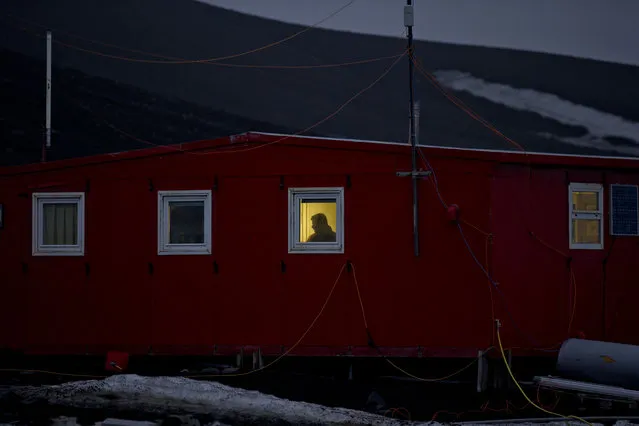
In this January 24, 2015 photo, a scientist stands behind a window on the Spanish base Gabriel de Castilla on Deception Island, part of the South Shetland Islands archipelago in Antarctica. If experts are right, and the West Antarctic ice sheet has started melting irreversibly, what happens here will determine if cities such as Miami, New York, New Orleans, Guangzhou, Mumbai, London and Osaka will have to regularly battle flooding from rising seas. (Photo by Natacha Pisarenko/AP Photo)
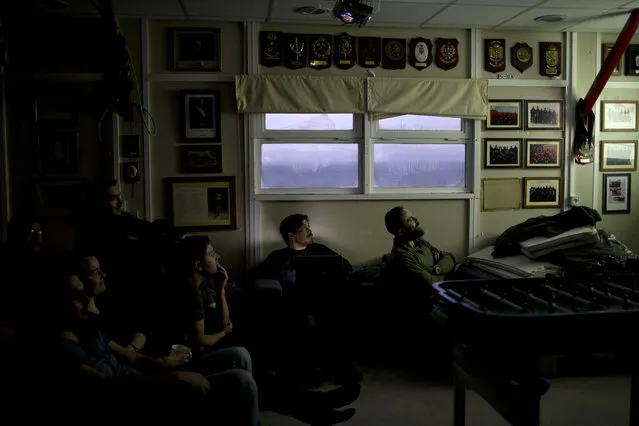
In this January 24, 2015 photo, members of the Spanish base Gabriel de Castilla, and scientists watch a movie on Deception Island, part of the South Shetland Islands archipelago in Antarctica. As an active volcano, Deception Island is a pot of extreme conditions. There are spots where the sea boils while in others it can be freezing. And while the sun rarely shines on the long, dark Antarctic winters, night time never seems to fall on summer days. (Photo by Natacha Pisarenko/AP Photo)
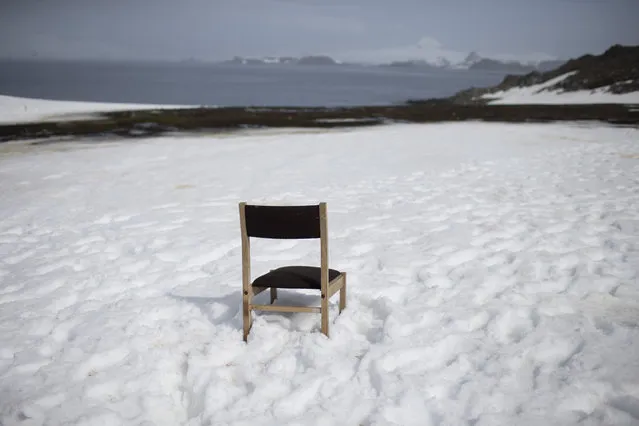
In this January 24, 2015 photo, a chair sits in the snow, left behind by someone who kept watch for a delayed ship, on the Risopatron Base on Robert Island, part of the South Shetland Islands archipelago in Antarctica. Often, scientists find something other than what they were looking for. Last year researchers calculated that ice on the western side of the continent was melting faster than expected. Last month, scientists researching vital geology in that melting were looking half a mile under the ice in pitch dark and found a surprise: fish half a foot (15 centimeters) long and shrimp-like creatures. (Photo by Natacha Pisarenko/AP Photo)

In this January 25, 2015 photo, Chile's Navy ship Aquiles moves alongside the Hurd Peninsula, seen from Livingston Islands, part of the South Shetland Islands archipelago in Antarctica. This is also the place where a hole in the ozone layer, from man-made refrigerants and aerosols, parks for a couple months when sunlight creeps back to Antarctica in August. It triggers a chemical reaction that destroys ozone molecules, causing a hole that peaks in September and then closes with warmer weather in November. (Photo by Natacha Pisarenko/AP Photo)
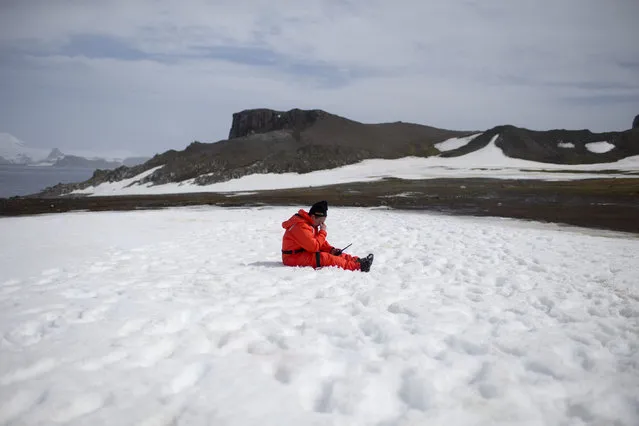
In this January 24, 2015 photo, a worker from the Chile's Antarctic Institute sits on the snow on Robert Island, part of the South Shetland Islands archipelago in Antarctica. NASA uses the remoteness of Antarctic to study what people would have to go through if they visited Mars. The dry air also makes it perfect for astronomers to peer deep into space and into the past. (Photo by Natacha Pisarenko/AP Photo)
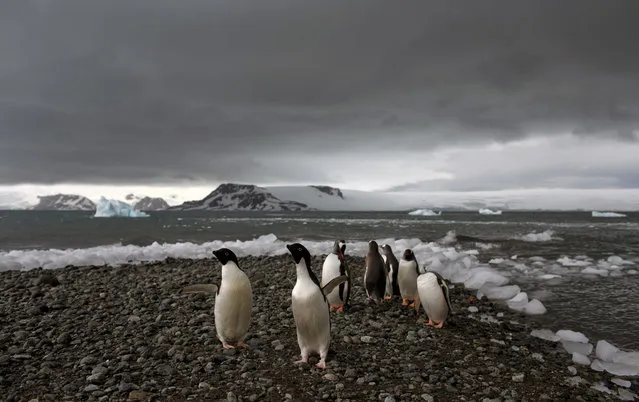
In this January 27, 2015 photo, penguins walk on the shore of Bahia Almirantazgo in Antarctica. Antarctica “is big and it's changing and it affects the rest of the planet and we can't afford to ignore what's going on down there”, said David Vaughan, science director of the British Antarctic Survey. (Photo by Natacha Pisarenko/AP Photo)
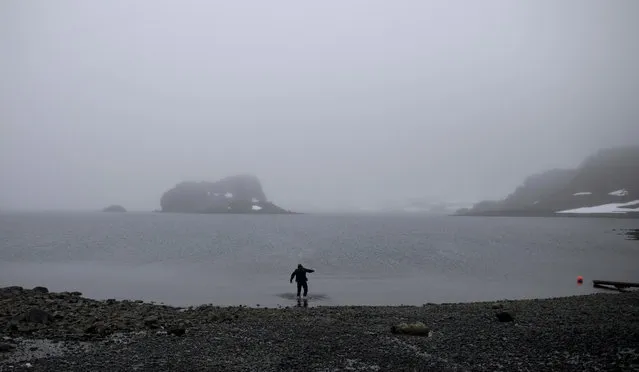
In this January 21, 2015 photo, scuba diver Luis Torres tests the water near the Chilean scientific station Escudero in Villa Las Estrellas on King George Island, part of the South Shetland Islands archipelago in Antarctica. For a dozen days in January, in the middle of the chilly Antarctic summer, The Associated Press followed scientists from different fields searching for alien-like creatures, hints of pollution trapped in pristine ancient ice, leftovers from the Big Bang, biological quirks that potentially could lead to better medical treatments, and perhaps most of all, signs of unstoppable melting. (Photo by Natacha Pisarenko/AP Photo)
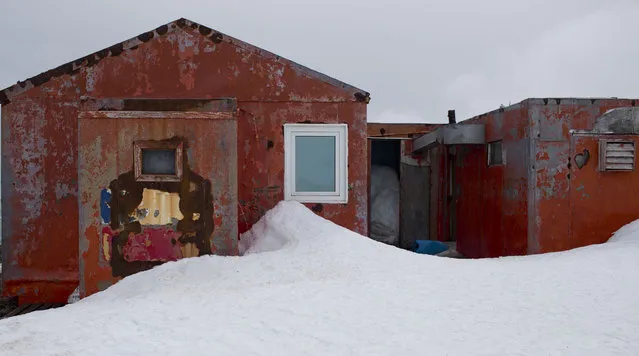
In this January 24, 2015 photo, snow surrounds buildings used by Chile's scientists on Robert Island, part of the South Shetland Islands archipelago in Antarctica. Temperatures can range from above zero in the South Shetlands and Antarctic Peninsula to the unbearable frozen lands near the South Pole. (Photo by Natacha Pisarenko/AP Photo)
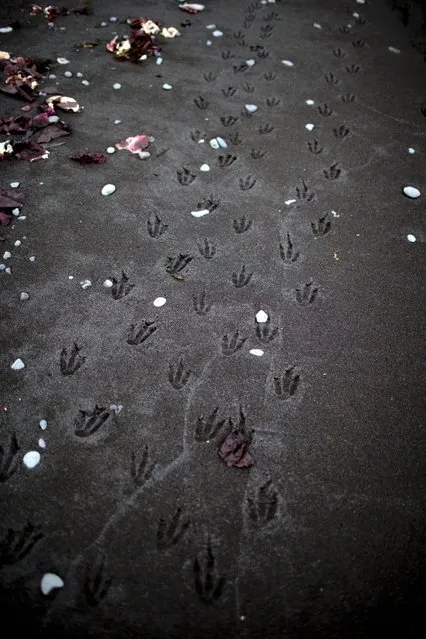
In this January 26, 2015 photo, pinguine footprints cover the beach in Punta Hanna on Livingston Island, part of the South Shetland Islands archipelago in Antarctica. Earth's past, present and future come together here on the northern peninsula of Antarctica, the wildest, most desolate and mysterious of its continents. (Photo by Natacha Pisarenko/AP Photo)
22 Feb 2015 10:45:00,
post received
0 comments
